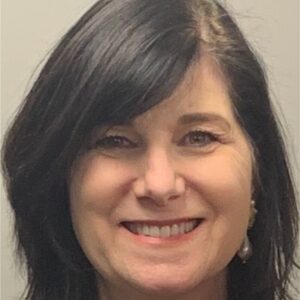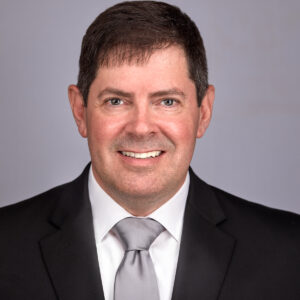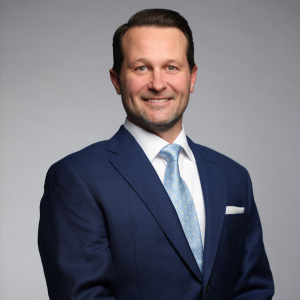Using the MDS 3.0 to promote culture change
My great-grandmother suffered from Alzheimer’s disease. I say she suffered because she was what was referred to as a “yeller,” often calling out and yelling for no apparent reason. She lived in a long-term care facility in the early 1990s. One day I went to see her and found the door to her room tightly closed and the TV volume turned way up-so no one could hear her cries. And no one cared. I decided I would never enter another nursing home as long as I lived. It wasn’t that I wouldn’t just work in a nursing home; my plan was to never again enter one.
This proved to be a false declaration. Eventually, I happily changed my mind, and I am currently a nursing home administrator.
Today I see a movement, supported by federal regulations, which will help ensure that no resident is ever locked in a room with no one around who cares. The creators of MDS 3.0 initially focused on assessing resident pain and depression. When fully utilized, however, this interview process opens all kinds of dialogues between staff and residents. Most importantly, the tool opens the door to ask every single resident about their simple pleasures. It is an area of the MDS 3.0 that I have heard many people in long-term care voice concerns about, concerns that often imply residents are not cognizant enough to answer the questions. This is one area that, in my opinion, the government got right. Even the most confused resident knows if he or she hates spinach and likes cream in their coffee. These are important simple pleasures.
The American Association of Nurse Assessment Coordination (AANAC) is a nonprofit professional association representing nurse executives working in the long-term care profession. AANAC is operated by nurses for nurses and is dedicated to providing members with the resources, tools and support they need in their specialized role of leaders and managers in long-term care. For more information, visit www.aanac.org or call (800) 768-1880.
The MDS 3.0 is a move toward the type of care that gives residents of a skilled nursing facility the opportunity to make personal choices about not only the care they receive, but also the life they lead. MDS 3.0 pushes the LTC world toward culture change.
FROM THE TOP DOWN
Where does one start with creating culture change in long-term care? Personally, I started at the beginning, changing the culture of my staff by breaking down the old hierarchy. The most important people who should have input regarding decisions about the residents are the residents themselves. The MDS 3.0 supports and, in fact, mandates this change of focus. The most informed staff members who know and understand the resident’s likes and dislikes are the ones who know them best: housekeepers and CNAs. As the administrator, I should be the last person asked to make a decision on what a resident would most prefer. This is not about what is convenient for the staff-this is about what the resident wants and how he or she chooses to live.
The resident interview section of the MDS supports a variety of conversations between staff and residents. We have created neighborhoods at my facility, St. Paul Health Center in Denver. Each neighborhood has a weekly meeting that all residents are encouraged to attend. Many attend weekly and some opt to sit it out, perhaps doing another activity in the same space. The first question I always ask is, “What are your simple pleasures?” One day when we gathered, a resident with dementia was nearby watching television. I asked her, “Who was your favorite teacher?” Without looking at us, she excitedly started talking about her third-grade teacher. She was explicit, clear, detailed and happy to tell us about this impactful educator. She had heard us. She always hears us. (We just hadn’t been asking the right questions!)
Learning to complete the new tool is difficult. However, once the specifics of the tool are clear, taking the gathered information and using it to allow a completely person-centered approach to care has been relatively simple. Our nurse assessment coordinator drops by each floor in the morning and huddles with the staff on everything that happened overnight, including any change in status and occurrences. Care plans are modified on the spot as needed based on the feedback of the interdisciplinary team. Because it is done daily, this takes at most 30 minutes to complete. We stay on top of it through constant communication with all staff members.
FORM AND FUNCTION
All MDS coordinators and DONs are working toward their RAC-CT, but we have ongoing staff education programs at all levels, because everyone is responsible for completing the MDS correctly, not just the nurse assessment coordinators. Daily huddles and the improved communication they provide have helped us head off some emerging complications with residents. Improved communication between the staff and the residents-or between all staff in general-supports assessments and the provision of needed interventions. It’s hard to know we need to intervene if no one is communicating or following up with assessments.
The entire staff at St. Paul in every area of the building has embraced and created an environment that makes person-centered care easy. They truly hold our community together and drive a culture that supports each individual resident’s choices. Creating a person-centered approach to care does not have to cost a lot of money. It isn’t a new program or something you create. Just do it. Use the MDS 3.0 as your guide and in the end, you may find that you are actually more financially solvent. We have been lucky enough to work for an organization that supports a person-centered approach and has financially supported our becoming Eden certified.
Culture change, however, does not require this type of investment if the funding isn’t available. Begin by talking to the residents. Find out what they want. I had one resident who had been an assistant to Albert Einstein and another who still had her tickets for the Titanic (because she had opted to stay an extra few days and take one of its sister ships home). It’s amazing what you will learn, all because the government told you it is required that you ask the residents about themselves.
Giving residents choices can be scary. It means they might not make what the caregivers believe is the best choice. I will tell you, if someone tries to take away my afternoon candy and soda when I am 95 because it isn’t nutritionally sound, we will have a problem! Giving choices is important. Allowing people to make what we may consider the wrong choice is also important.
This is our residents’ home. These are our residents’ lives. We need to allow them to live as they see fit. MDS 3.0 is helping to move long-term care in that direction.
Sara Dent, NHA, MBA is the Administrator at St. Paul Health Care in Denver, and recently received the Administrator of the Year award from the American Association of Nurse Assessment Coordination (AANAC) for her commitment to using the MDS 3.0 as a tool to drive culture change through her facility. Long-Term Living 2011 August;60(8):42-43
I Advance Senior Care is the industry-leading source for practical, in-depth, business-building, and resident care information for owners, executives, administrators, and directors of nursing at assisted living communities, skilled nursing facilities, post-acute facilities, and continuing care retirement communities. The I Advance Senior Care editorial team and industry experts provide market analysis, strategic direction, policy commentary, clinical best-practices, business management, and technology breakthroughs.
I Advance Senior Care is part of the Institute for the Advancement of Senior Care and published by Plain-English Health Care.
Related Articles
Topics: Articles , Facility management , Leadership , MDS/RAI











